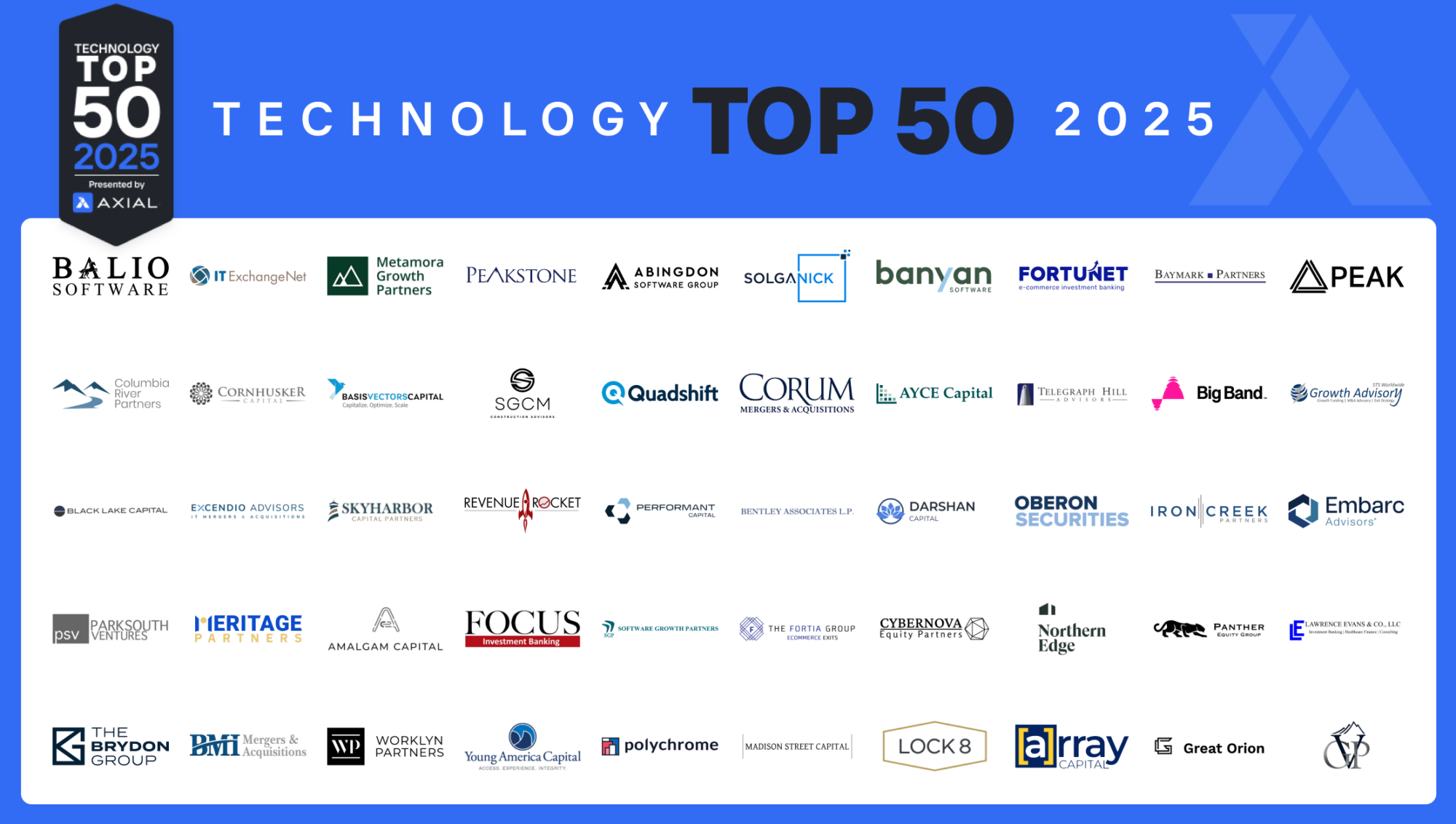
The Top 50 Lower Middle Market Technology Investors & M&A Advisors [2025]
Technology remains a steady presence in the lower middle market, representing ~13% of deals brought to market via Axial over…
What will be on dealmakers’ mind in 2019? Overall, we expect the trends that started during the bull market to continue. In general, sellers are looking for more flexibility when it comes to terms and buyers are listening as they create funds to do more growth equity investing and other things that allow sellers more choice.
In 2017 fundraising reached a new peak before dropping notably in the first nine months of 2018. The reason: fewer mega buyout funds have closed in 2018 and those have are smaller than funds of years past.
According to Probitas Partners’ annual institutional survey, which received responses from 90 limited partners, for 2019 it will be more of the same with most LPs looking to invest in middle market funds. Seventy three percent of institutional investors will focus on U.S. middle market buyouts while 52 percent will focus on U.S. small-market buyouts. This is a shift from 2007 when only 49 percent of LPs would focus on U.S. middle market buyouts and small market buyouts wasn’t even registering as a big enough category to include. By contrast, only 25 percent of LPs plan to invest in U.S. large buyouts in 2019. It’s important to note that European respondents to the Probitas Survey also plan to allocate most of their capital to U.S. middle market buyouts as well. Eighty percent of European respondents plan to focus on U.S. middle market buyouts while 28 percent plan to focus on U.S. small market buyouts.
“The biggest trends this year is that everything that’s been happening is intensified,” says Kelly DePonte, a managing partner with Probitas Partners. “That said, globally investors are looking at the U.S. middle market buyout industry as a very attractive place to invest. Growth equity has also become a more attractive strategy.”
The irony is that while everyone wants in on middle market buyouts, at the same time the biggest complaint is that pricing is too high. “As the focus intensifies so does the fear of pricing,” says DePonte. “That said, when investors look at other areas to invest they are less happy with risk profile of investing in the middle market. When you look at the middle market, those on the smaller side tend to have top quartile returns and outperform. That said, when the returns are more stable you won’t make a ton, because you are rewarded for risk but your less likely to lose so it’s a popular strategy.”
Brightstar Capital Partners, founded by Andrew Weinberg, closed on $710 million for its first fund, while Pike Street Capital closed its first fund at $200 million.
It’s been a long time coming, but going direct is becoming more and more favorable among family offices and this trend will continue. According to the 2018 FOX Global Investment Survey presented by the Family Office Exchange, of the 109 family offices surveyed for their annual survey, 30 percent are planning to increase their pace of direct investment over the next year. What’s more, family offices surveyed already held an average of 15 direct investments and entered an average of two new deals in 2017.
“This group has really grown over the past several years,” says Jason Bass, a managing director at Harris Williams & Co. “When we build a buyer’s list for a process we almost always create a category for the patient capital buyers today. This group is competitive and cannot be overlooked.”
Family offices going direct is in part being driven by sellers more frequently wanting the option of patient capital that a family office is able to provided. Family offices often have flexibility on timing and structure. They are also commonly willing to take a minority stake. “There are business owners who want a long-term investor. It makes good sense to look at a family office as a partner in some cases,” says Howard Romanow, COO and CFO with Island Management, a family office that invests in lower middle and middle market deals.
One of the biggest reasons family offices have become more active in direct investment is because they have been able to amass a lot of wealth during the bull market and now they are looking to diversify their holdings. “More and more families are making more money and they need to make sure they are diversifying their assets so they are looking at different ways to invest their capital,” says Romanow.
However, while the appetite to invest directly appears to be strong, there are several challenges. According to the FOX survey, performing due diligence (44 percent), getting adequate internal resources in place (42 percent), high deal valuations (43 percent) and sourcing deal flow (36 percent) are the top challenges family offices face when they try to invest directly.
“For family offices it’s all over the map. In certain instances, they are going direct because the understand an industry and it’s where they made money so they want to invest. In other instances, they are looking to diversify. In any case, it’s not simple to go direct,” says DePonte.
The key is having the right help and family offices are recognizing that. “The biggest difference from seven years ago is that family offices are more frequently hiring professionals from the investment world to help them make investment decisions,” says Romanow. “Some have learned that direct investing is possible, other realize that co-investment opportunities is right and still others believe that investing in private equity is still the right move for them. Every family office is different, but having the professional help to make those decisions is important.”
Over the past few years, traditional institutional investors have clamored to get into the hottest private equity funds — resulting in record capital raises across the industry. Now, institutional investors have turned their attention to another opportunity: private credit funds.
Institutional investors made a record number of new commitments to credit funds in 2017, reaching a peak of $28.7 billion, a 57 percent increase from the year before, according to Pensions & Investments. Additionally, in 2017, reported commitments to direct private debt strategies by pension funds, endowments, foundations, and insurance companies were up a whopping 211 percent from 2016.
Since banks largely shuttered their lending arms after the financial crisis, others came in to fill the void. Finance companies took the lead at first, but now all kinds of firms are employing private credit strategies. This will remain an area of focus in 2019.
The largest most recognizable private equity firms are actually the largest debt providers to the industry today. Firms such as The Blackstone Group, KKR, The Carlyle Group, and Apollo have larger debt portfolios than private equity ones at this point. That is a marked turnaround from when debt funds accounted for about one-fifth of their assets only a short decade ago.
These big private equity firms have been eagerly building their presence in the space. And why not? Debt is in high demand among private equity dealmakers, provides solid returns, and is only lightly regulated. Average annual returns for private credit funds have exceeded 5 percent over every five-year period since 1992, according to figures compiled by Hamilton Lane. That’s a more consistent return than private equity yields.
“The debt market basically exploded over the past eight years. It’s been growing ever since banks had to back off from high-yield lending under regulatory pressure after the great financial crisis. Banks are not making high yield loans these days,” says DePonte. “After the banks pulled back there were all these lending teams without a home. They either spun out and created new firms or joined up with other financial institutions and started lending arms.”
Middle market private firms have shown strong interest in private credit in the past couple of years. Solar Capital Partners recently closed on $750 million in commitment to pursue a private credit strategy as did East Lodge Capital. Other firms that have built credit arms include Adams Street Partners, The Sterling Group, The Riverside Company, H.I.G. Capital, Thomas Bravo, BC Partners, Silver Lake, and Gryphon Investors.
In 2018, Gryphon Investors, a middle market private equity firm based in San Francisco, closed its first mezzanine fund, Gryphon Mezzanine Partners L.P., with $100 million. “Over the past few years, a number of our limited partners seeking current-yielding investments have asked us about opportunities to participate in debt financings,” says David Andrews, the firm’s CEO. “This fund is designed to primarily to satisfy that LP demand.”
“Having lending capabilities makes a lot of sense for middle market firms that have powerful origination teams like H.I.G. and Riverside Company. They have people scouring the country looking for their next deals. They sometimes come across founders that need capital, but don’t necessarily want to sell. It’s perfect to then be able to offer them a debt solution,” says Tod Trabocco, a managing director with Cambridge Associates.
Growth equity funds are also becoming more and more popular with 54 percent of LPs saying they play to include growth capital funds in their investment plans in 2019, according to the Probitas Partners’ survey.
It used to be business owners sold their companies outright to a strategic acquirer or a financial buyer, or handed them down to family members. Today selling a minority stake in a business to a private equity firm is becoming increasingly prevalent and offers benefits to both owners and acquirers. According to Pitchbook, more than $21 billion has been raised in 2018 alone for minority investing. That’s in addition to the record-high $23 billion that was raised in 2017.
Minority investments offer middle market private equity firms a chance to differentiate themselves and gain more market share. Firms like The Riverside Company, Huron Capital, and Balance Point Equity have all diversified to be more inclusive of various deal terms, allowing them to cast their deal sourcing net much wider.
In October, Level Equity Management secured $535 million to pursue a growth equity strategy, which targets software and technology driven businesses.
In April, Huron closed on its inaugural non-control private equity fund, The Huron Flex Equity Fund, L.P., with $142 million. The new fund allows the firm to make non-control investments and be flexible with solutions for business owners. “A non-control equity strategy can help a company grow faster than it could on its own. It fills a hole in the market for businesses that would like to partner with firms that have access to operational resources and capital, but aren’t quite ready to give up all the control yet,” says Gretchen Perkins, a partner with Huron Capital.
In 2017, The Riverside Co. closed on its first non-control investment fund, Riverside Strategic Capital Fund (RSCF) with $418 million in capital. With a very large deal sourcing operation, The Riverside Company had noticed an increased demand for non-control capital. “Many companies have capital needs that can’t be satisfied in the traditional lending markets anymore,” says George Cole, a managing partner and co-fund manager of Riverside Strategic Capital Fund. “Some companies need capital for add-on acquisitions, shareholder redemptions, or liquidity, but don’t necessarily warrant a change of control. We raised RSCF to meet that untapped need.”
